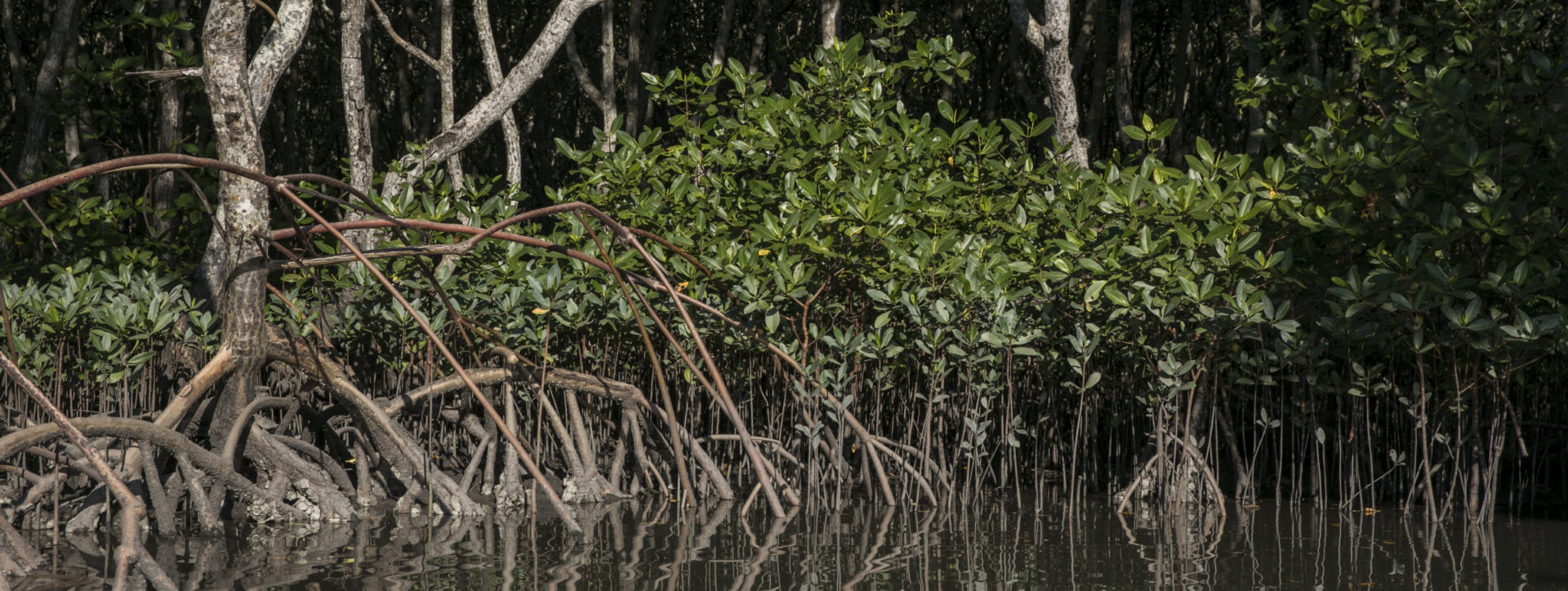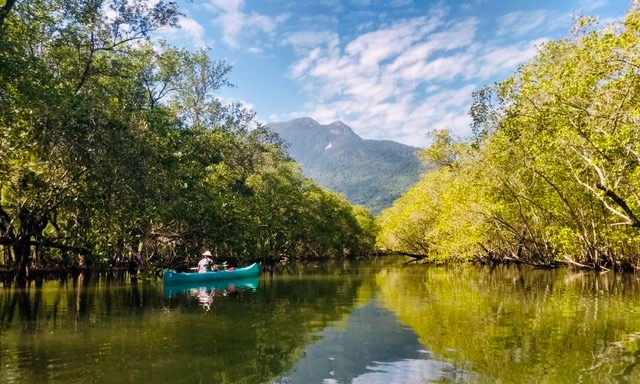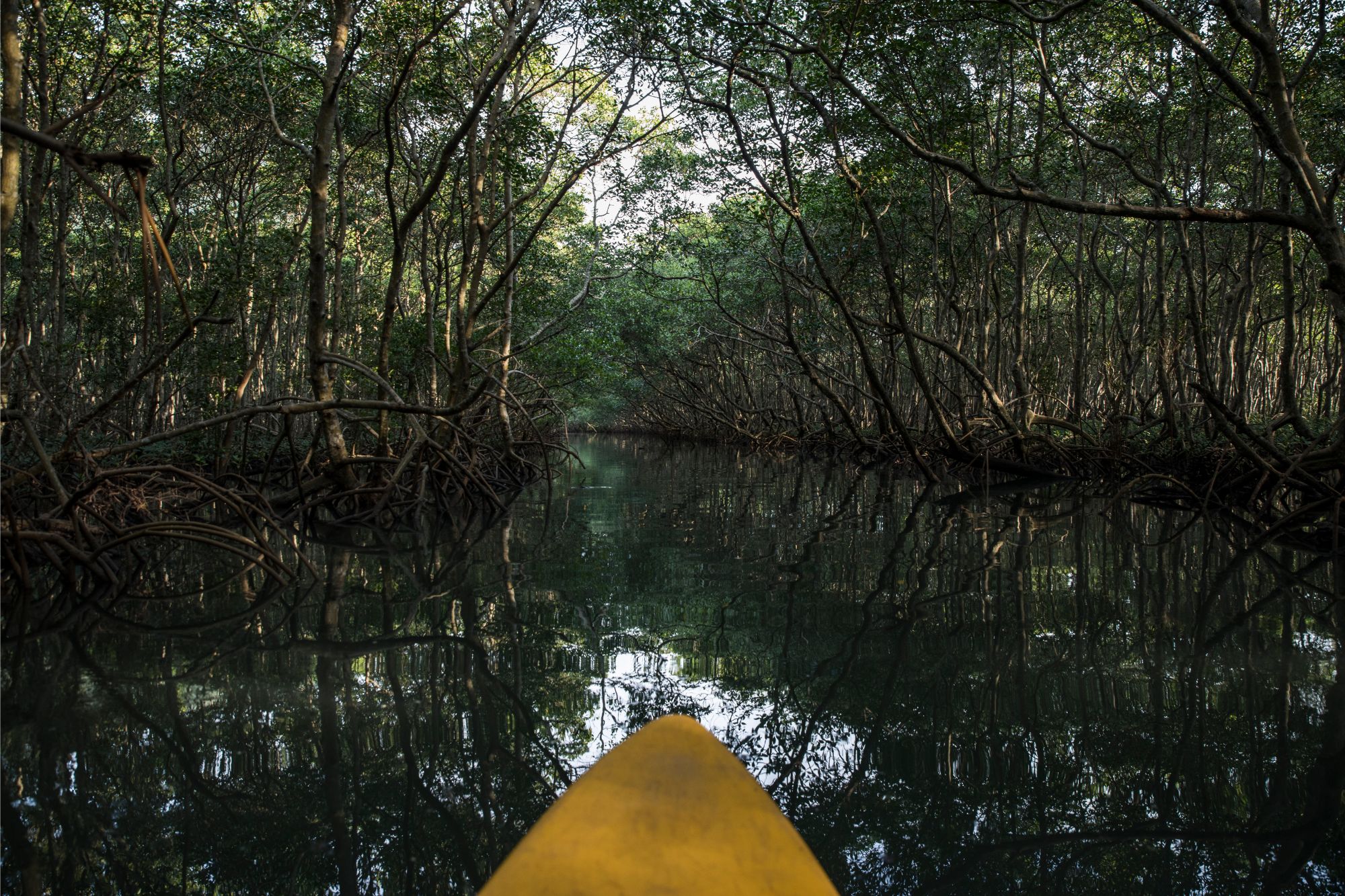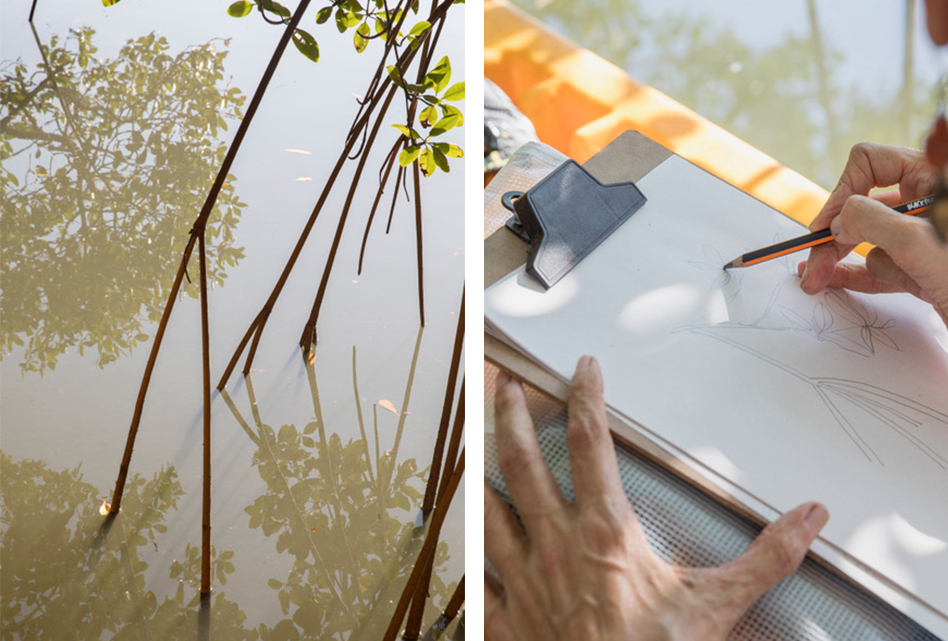THE PRACTICE IN MANGROVES
Mangroves are costal ecosystems where fresh water from rivers merges with salt water in a forest exposed to the sea tides. These are transitional zones between sea and coast which provide stability and suitable conditions for both the reproduction and the development of juveniles of many species, being also known as the nurseries of the oceans. Mangroves are important carbon sinks and offer excellent scenarios for learning about biodiversity and to get acquainted with some of the solutions occurring in nature where adaptation and specialization are necessary for survival
“The method was gradually taking me out of my daily habits and inside the environment. It was so calm and beautiful.”
“Learning about the filters in the mangroves and their limits of resilience made me think about the filters in my body and how I could treat them better.”
“I was impressed by the beauty and generosity of the mangroves which hosted a lot of species as a nursery and also provided nourishment for many others, including humans.”
“I am glad to have a positive image of the mangroves to which I can relate. I can go back to the experience and feel good about it.”
“The mangroves are an expression of what transition is. It was interesting to see that it is possible to find stability in soft and unstable wet grounds. There was tranquility despite the stress of the tidal zone.”
“I could see that in the transition everything has it’s timing and it’s role. We need to respect this for the transition to happen in the best possible way.”
“I feel grateful for that experience and intend to keep this sensation alive in me.”




